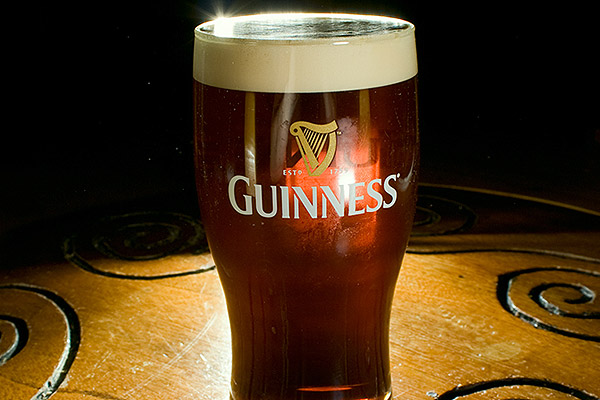
On his academic website, Steve Ziliak of Roosevelt University, co-author (with UIUC UIC's Deirdre McCloskey) of The Cult of Statistical Significance: How the Standard Error Costs Us Jobs, Justice, and Lives, lists many areas of research: "statistical significance vs. practical importance; random vs. balanced designs of experiments; Ronald A. Fisher; William S. Gosset (aka 'Student'); Guinness beer and Guinnessometrics; welfare, charity, and poverty; dialogue and pluralism in economics education; the rhetoric of economics; haiku economics; and the history and philosophy of science and statistics."
Hang on: "Guinness beer and Guinnessometrics."
Yes. The econ prof returned from the Beeronomics Conference (a real thing) with a paper in the Journal of Wine Economics (also real): "W.S. Gosset and Some Neglected Concepts in Experimental Statistics: Guinnessometrics II" (PDF; via):
Quantitative studies of fermentation have solved some big scientific problems – such as the errors of observations committed daily in science. Few realize that over the past three centuries there are studies of beer and wine standing not at the arid valleys but at the glorious peaks of quantitative method. To see the connection, just think of some story-book figures in the history of science – great experimentalists, such as Priestley, Laplace, Lavoisier, Pasteur, Johannsen, and Gosset aka “Student”. Fermentation was for each of these scientists the raw material, the pathway to scientific discovery and commercial innovation.
It's William Sealy Gosset (pen name "Student"), who was educated in chemistry at Oxford and worked as a brewer at Guinness, whose work Ziliak takes up:
A general solution to the problem of random error in small sample analysis was given in 1908, by Student. “Student” is the pen name of William Sealy Gosset (1876–1937), an Oxford-trained chemist and experimental scientist who worked his entire adult life as a brewer and business man for the Guinness Brewery, Dublin (1899 to 1937) and Park Royal (1935 to 1937).14 Student was experimenting on three of the chief inputs to Guinness stout – barley, malt, and hops – when he made the discovery leading to what scientists now call Student’s t-distribution, table, and test of significance.
But Student’s contribution to experimental science and the theory of errors extends far beyond Student’s t – however permanent and fundamental t is. Between 1904 and 1937, Student innovated – more than two decades before R.A. Fisher – a useful collection of experimental concepts, methods, and attitudes, which were used for doing routine work at cooperating farms and at the Guinness brewery.
Such as:
The experimental concepts which Student used at the brewery to revolutionize science and brewing are outlined here, basically in order of their development by Student in his job as apprentice brewer (1899–1906), Head Experimental Brewer (1907–1935), and finally Head Brewer of Guinness (1935–1937): (1) net pecuniary advantage and the purpose of the experiment; (2) profitable odds versus a fixed rule for the level of statistical significance; (3) small samples of repeated and independent experiments; (4) random error versus “real” error; and (5) the power and efficiency of “balanced” over “randomized” field experiments in economics. The balance of this article illustrates these concepts with experiments designed and/or evaluated by Student at Guinness’s brewery.
Which raises some questions for Ziliak:
The most famous result of Student’s experimental method is Student’s t-table. But the real end of Student’s inquiry was taste, quality control, and minimally efficient sample sizes for experimental Guinness – not to achieve statistical significance at the .05 level or, worse yet, boast about an artificially randomized experiment. Student’s world class achievement raises a basic question about statistical science after Fisher: to what extent should scientists start with mechanical methods rather than with the nature of the economic or biometric problem to be solved?
Guinness has long since been surpassed as a stout, IMHO. Our Drinker's Guide recommends Bell's Expedition, Founder's Breakfast, and others for good winter drinking; I'm partial to Half Acre's Big Hugs and Left Hand Milk Stout. But all, to my knowledge, are mere stouts, not a scientific revolution.
Photograph: KellBailey (CC by 2.0)


